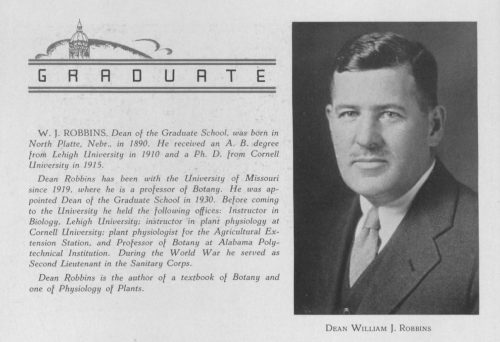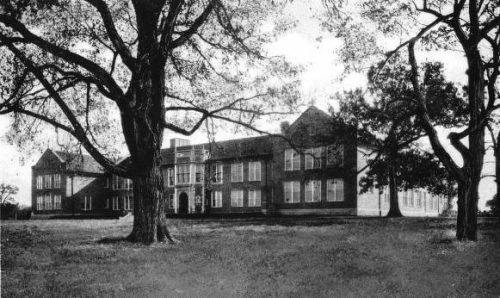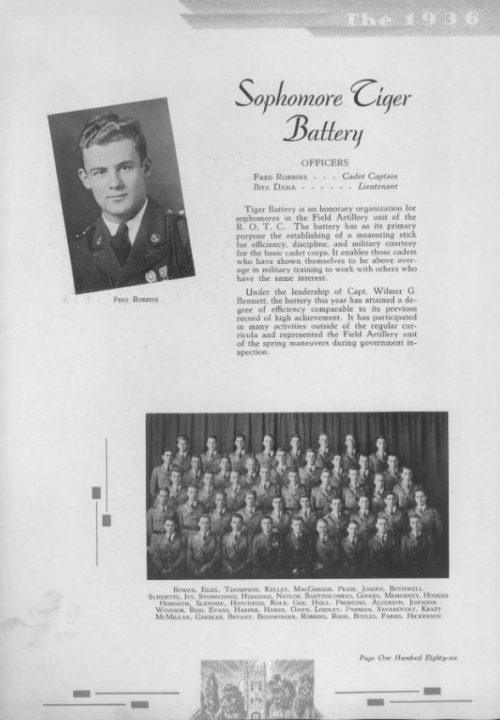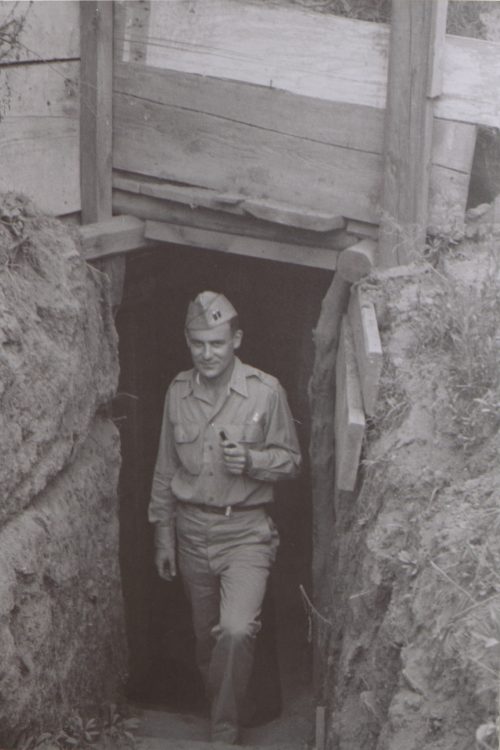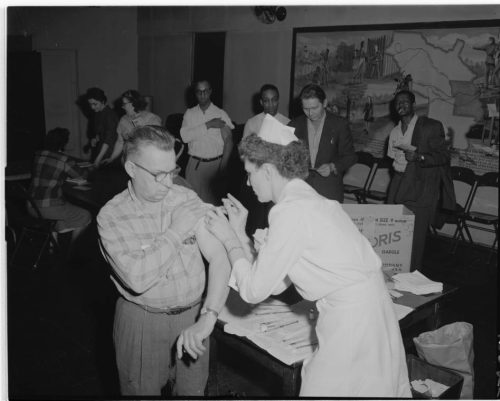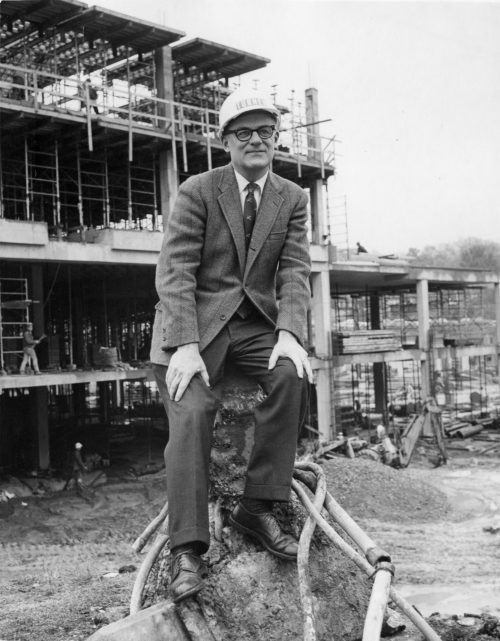![05365D1 Frederick Robbins, ca. 1970s [Image 5365, Case Western Reserve University Archives]](https://historicmissourians.shsmo.org/wp-content/uploads/2023/07/05365D1-scaled-300x400.jpg)
Frederick Robbins
Introduction
Frederick C. Robbins was a doctor from Columbia, Missouri, who devoted his life to studying diseases. His research on the virus that causes polio helped lead to a polio vaccine. Robbins won a Nobel Prize in 1954 for his work.
Early Years
Frederick Chapman Robbins was born in Auburn, Alabama, on August 25, 1916, to William Robbins and Christine Chapman Robbins. His parents met while studying botany, the science of plants, at Cornell University. His mother was a botanist and a writer. His father was a professor of botany at Alabama Polytechnic Institute (now Auburn University) when Frederick was born. In 1919, the Robbinses moved to Columbia, where William Robbins became a professor at the University of Missouri. In addition to teaching classes, his father also served as dean of the Graduate School and later was the acting president of the university. In 1937, William Robbins was appointed director of the New York Botanical Garden in New York City.
Education
Growing up in Columbia, Frederick Robbins spent much of his early life around the University of Missouri campus. He attended public schools in Columbia until his father was offered a two-year research and teaching appointment in Paris, France, in 1928. His parents then enrolled him at a boarding school in Switzerland, Institut Sellig.
When his family returned to Columbia, Robbins attended David H. Hickman High School, where he was bumped up two grades due to his coursework in Switzerland. While at Hickman, he was a member of the Student Council, the French Club, and other student clubs. He graduated in 1932.
University of Missouri
After high school, Robbins enrolled at the University of Missouri. At MU, Robbins briefly played on the polo team and was a member of Phi Gamma Delta and Phi Delta Theta fraternities as well as the Reserve Officers’ Training Corps (ROTC). He served as cadet captain of the sophomore Tiger Battery of ROTC in 1935-36.
After receiving high distinction for his medical research later in life, Robbins confessed that his coursework at the university proved to be such a challenge that he “was lucky to get through it all.” Choosing at first to major in chemical engineering, Robbins switched his focus to pre-medicine. He completed a Bachelor of Arts degree in 1936 and a Bachelor of Science degree in 1938.
Medical Training
Upon completing his studies at the University of Missouri, Robbins was accepted into the Harvard University Medical School. He earned his medical degree in 1940 and went to the Children’s Hospital Medical Center in Boston to study bacteria and how they affect human health.
When the United States entered World War II, he enlisted in the army in 1942. Robbins was assigned to the Fifteenth Medical General Laboratory as chief of the Virus and Rickettsial Disease Section. He specialized in the study of infectious diseases, particularly hepatitis, typhus fever, and mumps. He was honorably discharged from the army in 1946 at the rank of major. In 1948 he married Alice Northrop, the daughter of John H. Northrop, who had won a Nobel Prize in chemistry.
The Poliomyelitis Virus
At the end of his military service, Robbins returned to Boston to complete his medical training at the Children’s Hospital Medical Center. He was also a member of the faculty at the Harvard University Medical School and held positions at the Boston Lying-In Hospital and Massachusetts General Hospital.
During this time, he worked closely with John Franklin Enders and Thomas Huckle Weller on the study of infectious diseases, particularly the poliomyelitis virus, known widely as the cause of polio. At the time, polio, which affects the the body’s nervous system and muscles, was considered a highly contagious disease. Their research into growing this virus so that it could be used in scientific research made it possible for two other doctors, Jonas Salk and Albert Sabin, to develop a polio vaccine in the 1950s. For his role in the medical breakthroughs to combat polio, Robbins received the E. Mead Johnson Award from the Society for Pediatric Research in 1953 and the Nobel Prize in Physiology or Medicine in 1954.
Case Western Reserve University
In 1952, Robbins accepted a position as a professor of pediatrics at the School of Medicine at Case Western Reserve University and director of the Department of Pediatrics and Contagious Diseases at the Cleveland Metropolitan General Hospital in Ohio. He remained in Cleveland for nearly thirty years, eventually serving as chairman of the Committee on Medical Education and dean of the School of Medicine at Case Western Reserve University. He left the university briefly in the 1980s to serve as president of the National Academy of Sciences’ Institute of Medicine. He returned in 1985 and spent the rest of his career at Case Western.
Legacy
Over the course of his career, Robbins was honored with many awards for his medical achievements. In 1961, he was elected president of the Society for Pediatric Research. A year later, he became a fellow of the American Academy of Arts and Sciences. In the 1970s, he was elected to the American Philosophical Society and the National Academy of Sciences. Robbins received the Benjamin Franklin Medal for Distinguished Achievement in the Sciences from the American Philosophical Society in 1999.
Robbins was also honored by the University of Missouri and Case Western Reserve University as an alumnus and faculty member. The University of Missouri awarded him an honorary degree of Doctor of Science in 1958. The Frederick C. Robbins Society for students in the Case Western Reserve University School of Medicine is named in his honor. Frederick C. Robbins passed away on August 4, 2003, in Cleveland.
Text and research by Sean Rost
References and Resources
For more information about Frederick Robbins’s life and career, see the following resources:
Society Resources
The following is a selected list of books, articles, and manuscripts about Frederick Robbins in the research centers of The State Historical Society of Missouri. The Society’s call numbers follow the citations in brackets.
Articles from the Newspaper Collection
- “3 Americans Given Nobel Prize for New Weapons against Polio.” St. Louis Post-Dispatch. October 21, 1954. p. 1.
- “Academic Attainment the Rule in Nobel Prize Winner’s Family.” Columbia Missourian. December 14, 1954. p. 5.
- Carlson, Conwell. “Nobel Winner Tells of Viruses.” Kansas City Times. March 27, 1963. p. 21.
- “One of the Nobel Prize Winners Is a Graduate of Missouri U.” Kansas City Times. October 23, 1954. p. 6.
- “Robbins Named Graduate Dean.” Columbia Missourian. March 19, 1930. p. 1.
- David Henry Hickman High School. The Cresset. Columbia: David Henry Hickman High School, 1931. [REF H056.851 H528c 1931, v.20]
- David Henry Hickman High School. The Cresset. Columbia: David Henry Hickman High School, 1932. [REF H056.851 H528c 1932, v.21]
- University of Missouri. Savitar. Columbia: University of Missouri, 1933. [REF 378.778UMC V8 1933, v.39]
- University of Missouri. Savitar. Columbia: University of Missouri, 1934. [REF 378.778UMC V8 1934, v.40]
- University of Missouri. Savitar. Columbia: University of Missouri, 1935. [REF 378.778UMC V8 1935, v.41]
- University of Missouri. Savitar. Columbia: University of Missouri, 1936. [REF 378.778UMC V8 1936, v.42]
- University of Missouri. Savitar. Columbia: University of Missouri, 1937. [REF 378.778UMC V8 1937, v.43]
- University of Missouri, President’s Office, Papers (C2582)
The papers of the University of Missouri President’s Office contain records from the administrations of Richard Henry Jesse, Albert Ross Hill, J. C. Jones, Stratton D. Brooks, Walter Williams, Frederick A. Middlebush, and Elmer Ellis. The collection also includes records related to William Robbins’s time as dean of the Graduate School and acting president.
Outside Resources
These links will take you outside the Society’s website. The Society is not responsible for the content of the following websites:
- American Association of Immunologists
This website is hosted by the American Association of Immunologists and features a biography of Frederick C. Robbins. - Case Western Reserve University Special Collections & University Archives
The Special Collections and University Archives are home to the Kelvin Smith Library’s rare books and manuscripts collections, and the records of Case Western Reserve University. - The Nobel Foundation
This website is hosted by the Nobel Foundation and features a biography of Frederick C. Robbins originally written in 1964 and revised after his death.

